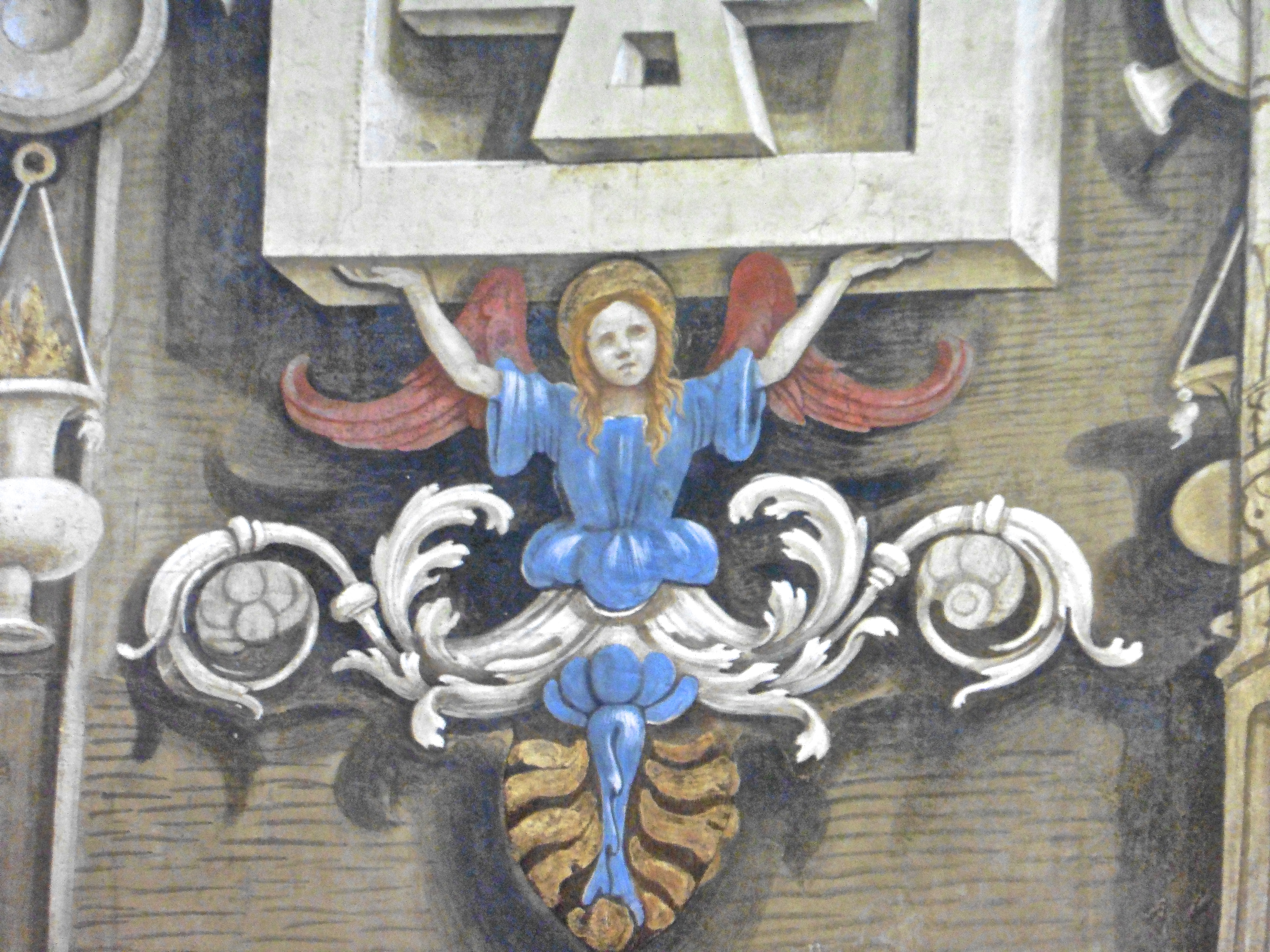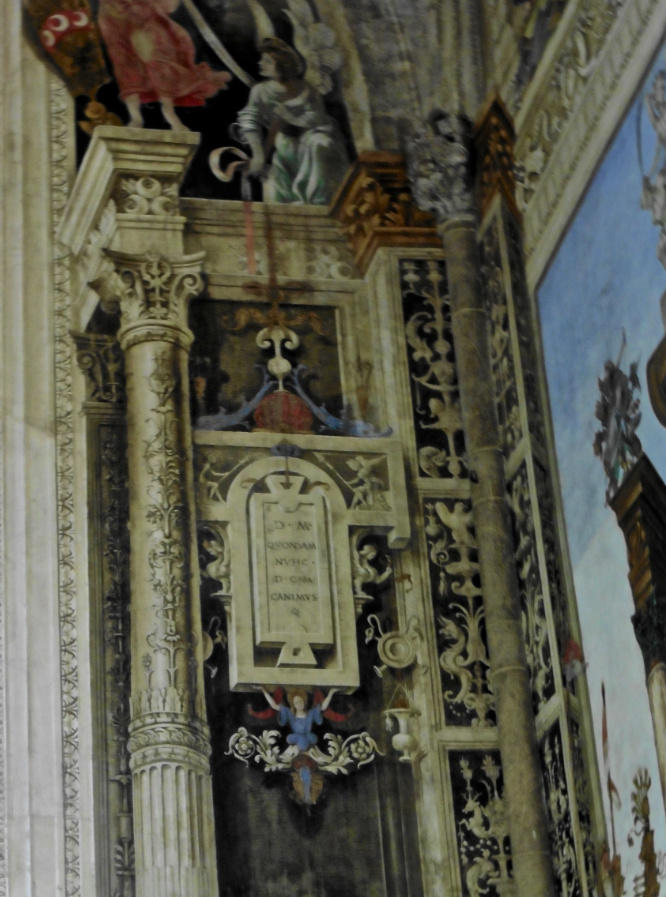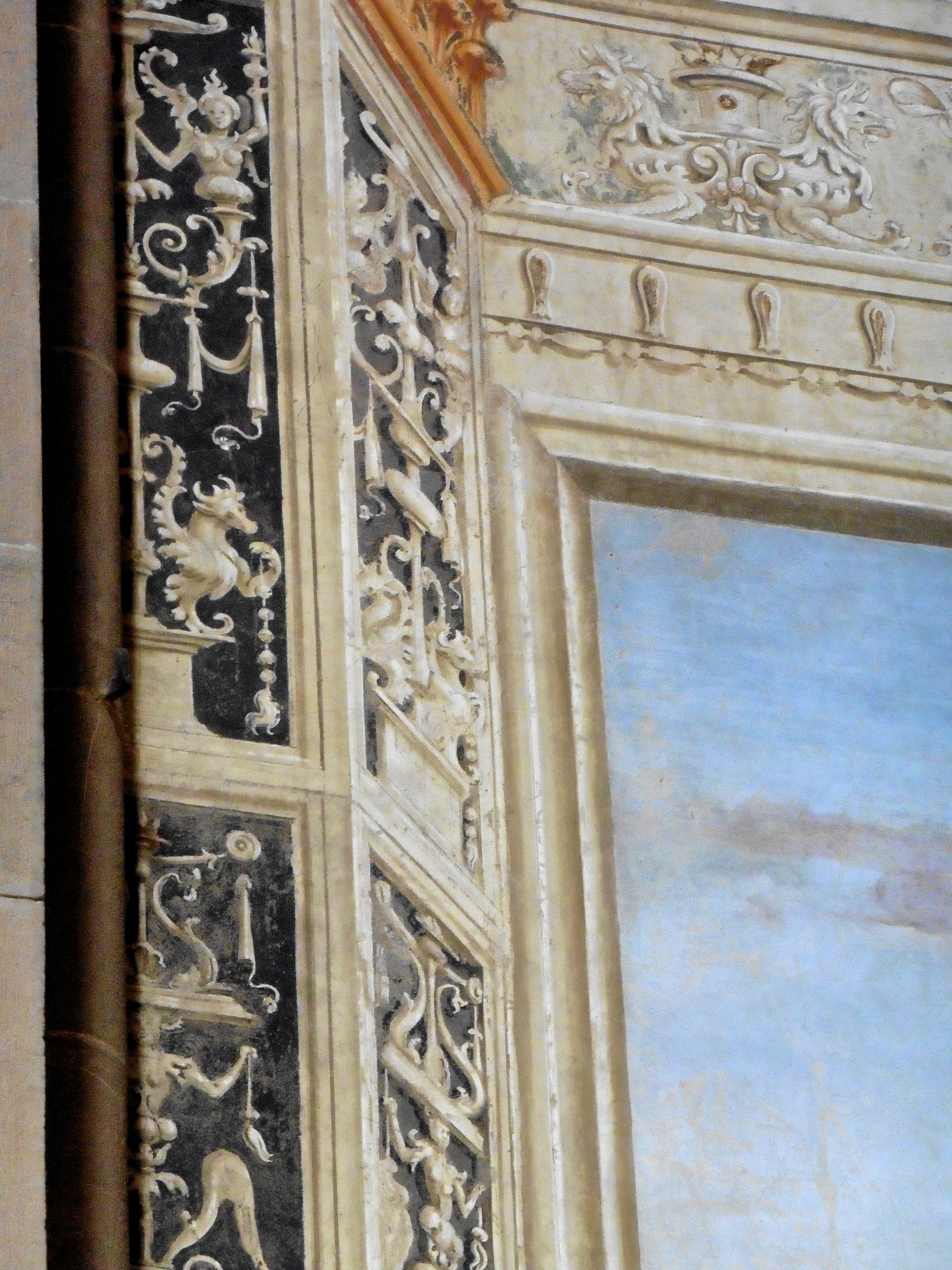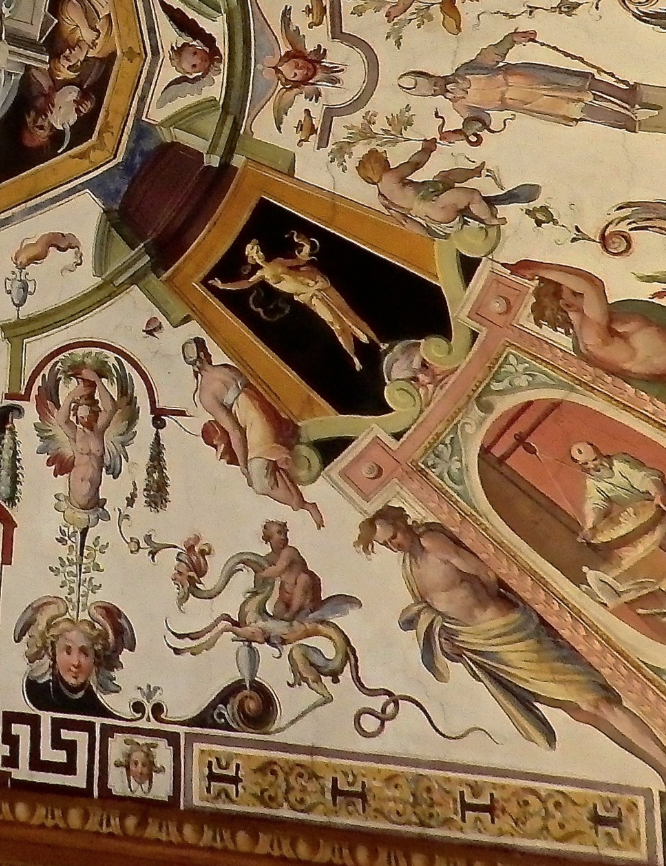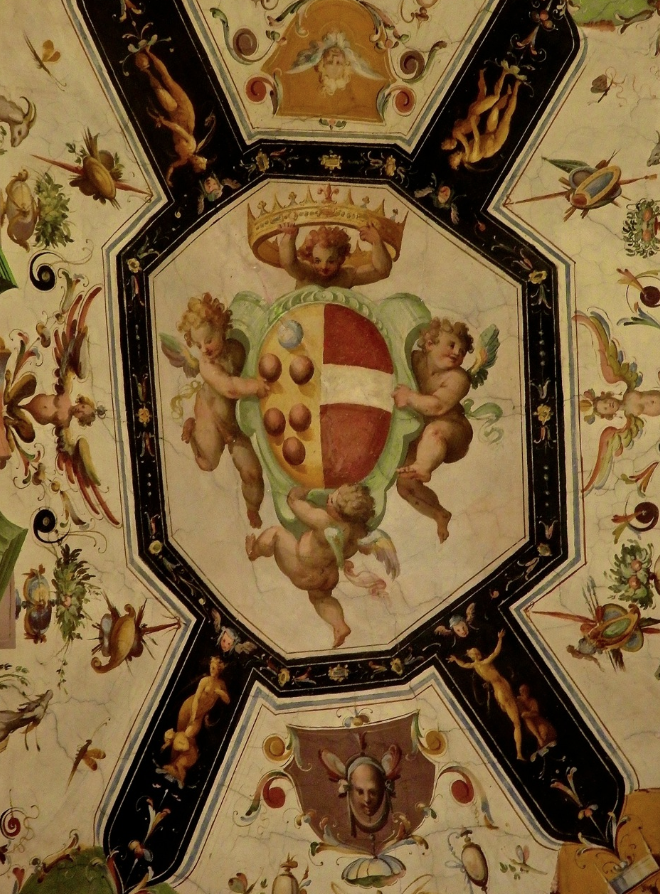The term Grotesque derives from the caves, or grotte, where Renaissance builders unearthed this ancient form
The Grotesque style was all the rage during the 1500s for both interiors and exteriors all over Italy. It continued to be so for the following two centuries. Nowadays, when the word is mentioned, negative images of unfortunate distorted images of nature and horrific representations of creatures, humans and beasts, are usually conjured up.
However, this negative conception is a relatively modern distortion of the original significance of the name describing one of the most imaginative Renaissance decorations – which was anything but negative, rather wonderfully playful and elegant.
The Grotesque decorative style dates to Ancient Rome and was the decorative décor of choice covering the walls and ceilings of the wealthy homes. It was rediscovered in Rome during Renaissance period while the city was undergoing a construction boom.
Digging down to lay foundations for the magnificent new Renaissance palatial residences, they unearthed much ancient statuary and the remains of ancient Roman buildings.
During the 1480s, what remained of the Ancient Roman Emperor Augustus’ palace and that of Nero were discovered. The Grotesque style had decorated their walls. What remained of these buildings was completely covered under many feet of landfill after centuries of the Tiber with the build up of silt creating a much elevated ground level.
These discoveries fascinated everyone. Italy was extremely interested in the Ancient World at this time; there was a revival of interest in all things Classical and this was an unbelievably exciting discovery as very few examples of pictorial decoration from the ancient world had survived. Artists, armed with fire torches, descended to what reminded them of underground caves and copied these wall decorations.
Raphael rendered them famous in the Vatican palace commissioned by the Pope (the Vatican loggias). Perugino (the master of Raphael), Domenico Ghirlandaio (the fresco and painting master of Michelangelo), Pinturicchio and Filippino Lippi – who introduced Florence to the Grotesque at the Strozzi family chapel (1489-1502) in the Santa Maria Novella Church – among so many more of the most important masters of the day, made the pilgrimage to these underground ‘caves’ to copy the designs and then incorporate them in their commissions of family chapels, private homes and the exteriors of buildings all over the Italian peninsula. These cave-like places, or grotte, gave birth to the name of the decorative style, grottesco in Italian.
The Grotesque is characterised by strangeness or imaginative forms, usually displaying a combination of half-man half-beast creations, zoomorphic figures and mythological creatures, depicted with a strong, sinuous line fluidity. It represented an unknown aspect of the Ancients to Renaissance man. The Ancients, so admired and emulated for their grammar of classical rules and order, were not associated with this show of playfulness, this light-hearted and unregulated side as seen in the Grotesque.
In the 18th century the term Grotesque in English took on a much broader meaning and became associated with caricature and in particular, associated with over-emphasis on the bizarre and ridiculous. During the Age of Reason and Neo Classicism, this meditation on imaginative strangeness and the lack of structure was viewed as abnormal and against the order of nature. Thus, the negative connotation was born.
The grotesques from the 1500s in Italy are a delight: the Piccolomini library inside the cathedral of Siena, the ceiling of the top floor of the Uffizi gallery and in the Grand duke’s rooms in the Palazzo Vecchio in Florence, in the Vatican palace and the Villa d’Este (just outside Rome), just to name a few of some of the outstanding examples of masterpiece Grotesque work all over the country.

